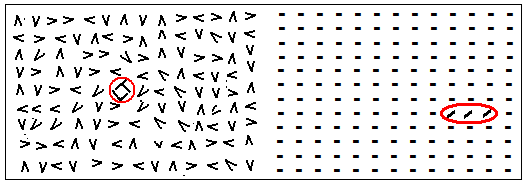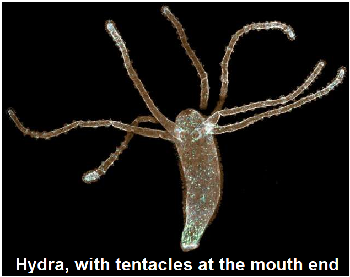When did living things learn to sleep? - S.Ananthanarayanan.
“Sleep that knits up the ravell’d sleeve of care…chief nourisher in life's feast… and, “...downy sleep, death's counterfeit...”, says Shakespeare, of the nature of sleep. Yet the nature of this state of being that all living things must have to sustain their wakeful hours has evaded understanding.
Christoph Nissen, Hannah Piosczyk, Johannes Holz, Jonathan G. Maier, Lukas Frase, Annette Sterr, Dieter Riemann and Bernd Feige, from the Universities of Bern, in Switzerland, of Surrey in UK, and of Freiburg and of Applied Police Sciences, Villingen-Schwenningen, in Germany, write in the journal, Sleep, of the Sleep Research Society, of trials that show that sleep is a distinct state that affects the reorganisation of neurons in the brain in a way that mere restfulness cannot. In another study published in the same month in the journal, Science Advances, Hiroyuki J. Kanaya, Sungeon Park, Ji-hyung Kim, Junko Kusumi, Sofian Krenenou, Etsuko Sawatari, Aya Sato, Jongbin Lee, Hyunwoo Bang, Yoshitaka Kobayakawa, Chunghun Lim, Taichi Q. Itoh, from Kyushu University, Japan, Ulsan National Institute of Science and Technology, South Korea and Agro-Paris Tech, Paris, go into the origin of the phenomenon of sleep, did it evolve as behaviour to help maintain the brain or was it there before the bran came to be?
The trials reported in the journal, Sleep, are related to the nature of learning, where neurons, or brain cells, consolidate connections which form during experience. Thus, if a response to a stimulus, out of possible responses, proves to be correct, the neuron circuit that corresponds to the correct response is strengthened and grows stronger with repeated use, while connections of incorrect responses weaken by disuse.
While sleep is seen to promote reorganisation of neurons, the paper says, it is not clear whether it is activity in the brain during sleep, or the lack of diverting stimuli during periods of sleep, that bring this about. Trials were hence designed to see if learning during a spell of activity was strengthened by a period of sleep, compared to the same period spent in normal activity, or in non-sleep inactivity, with minimal stimulation, so-calledpassive waking.
The trials, the texture discrimination tasks, were to identity patterns embedded in visuals that were flashed before the participants. The participants had to first concentrate on the centre of the screen and then activate the first image. The first image was an array of randomly oriented ‘Vs’, with a letter ‘L’ or ‘T’, at some angle of orientation, in the centre. This image remained for less than a third of a second, and the next image was shown. The second image was an array of horizontal dashes, except for a series of three diagonal dashes, horizontal or vertical, somewhere off centre. This image stayed for a tenth of a second. The task was to identify the letter, ‘L/T’ and then say whether texture target was horizontal or vertical. There was immediate feedback on the ‘L/T’ response, but not on the texture response.
This trial was conducted with 62 participants, who were trained during the morning, till they could get the answers right most of the time. The trial was then repeated later in the day, when the participants, in three groups, had spent the intervening period in (i) usual activities (ii) in sleep or (iii) resting without activity in a darkened room. The principle was that the texture discriminating task was one where the learning that took place in the morning session would get consolidated, through ‘synaptic plasticity’ or the formation of connections between neurons, during the period of time between the trails. Now, if there were differences in the learning of the three groups, it would reveal whether sleep, or passive wakefulness, made a difference.

The result was unequivocally that the group that had been asleep did better than the two others. There was, in fact, no difference between the active group and the passive wakinggroup. Which shows that the sleeping state is one that specifically leads to consolidating learning, and formation of memories, quite apart from other physiological effects of sleep, and in a way that is not possible just by being well rested.
The second paper, in the journal, Science Advances, is about how this role of sleep, in preserving or restoring the effects of experience on the brain, could have evolved. The paper notes that sleep or states exactly like sleep are seen in practically all animals, the vertebrates, animals with shells, even in worms. How this spectrum of species, which have central nervous systems that range from rudimentary to complex, have the same mechanisms of sleep regulation, is still a mystery, the paper says. The authors hence consider a group of animals with complexity just below that of animals with central nervous systems. This is the category of Cnidaria, a group of water-dwelling animals that consist of a non-living, jelly-like substance, sandwiched between two thin layers of tissue. These animals have just one orifice to take in food, which they capture with the help of stings that protrude from around the mouth.
The feature of interest, however, is that the body movements of these animals are controlled by a net of interconnected nerve cells, with no centralised brain or brain-like organ. The nerve net allows them to respond to the environment, that is food or chemicals, but not to make out where a stimulus has come from. An instance of cnidarians is the hydra, a 1 cm long, cylindrical creature, with the mouth at one end, which produces the same motor action regardless of where it receives a stimulus.

The paper says that the diffuse, nerve net probably represents the ancestral organisation of the nervous system. The interesting thing, however, is that cnidarian species, corals, jellyfish are other instances, display periodic suspension of activity, sometimes, different daytime and night behaviour. These states, which can be considered to be sleep-like, are similar to those of animals which have a distinct central nervous system. The similarities for instance, are the reduced response to stimuli and the physiological effects of sleep-inducing drugs.
The authors considered the case of the hydra vulgaris, the common hydra, one of the simplest of cnidarians, as the cnidarian model of sleep. The study was to photo-record the hydra’s activity every five seconds, with a definition of what was its quiescent, or reduced activity state was, in terms of the level of activity. It was found that when hydra entered this state, they could be jerked out of the state by a pulse of light. If they had been is the state for over twenty minutes, however, it took substantially longer for them to be aroused. The same reduced response was seen when hydra that had been in the quiescent state for more than twenty minutes were exposed to chemical feeding signals.
Further, hydra were seen to display day-night regularity in entering the sleep state, and other features, like similar genes that regulate sleep, the nature of nerve signals, and physiological changes, as found in other animals. What we find is evidence that sleep is a state that was in existence before the nerve activity was centralised in the brain. These observation of cnidarians “provide important insights into how ancestral sleep has evolved with developing central nervous systems and how sleep-regulatory pathways have been reorganized accordingly,” the paper says.
------------------------------------------------------------------------------------------ Do respond to : response@simplescience.in-------------------------------------------